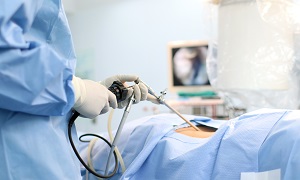Adrenalectomy
Your adrenal glands are two small organs, which are located above each kidney. They are triangular in shape and around the size of your thumb. These glands are also known as endocrine glands since they produce hormones.
Surgery to remove an adrenal gland is known as Adrenalectomy. It might be sometimes necessary to remove an adrenal gland if a tumor is producing excess hormones or is quite large in size, i.e. more than 2 inches or 4 to 5 centimeters. Surgery might also be required if the tumor is malignant or suspected to be cancerous. Sometimes both glands might require removal. In such cases, you will need to take supplemental hormone medications.
However, if only one of them is removed, the other one will take over full function without the need for any ongoing medications.
Purpose
The most common reason why people can choose to go for adrenalectomy is because of increased production of hormones by the adrenal glands. Generally, this is caused by an adrenal mass or tumor. The most common form of tumor is pheochromocytoma and this can lead to various problems, which can include blood pressure.
Preparation
Before the surgery is scheduled, you might need to provide your doctor with your medical records, radiology images, lab test results, etc.
If you are considered a suitable candidate for the surgery, you will need to be on a liquid diet for 24 hours before the surgery. This can include broth, tea, fruit juice, coffee and soda. However, you should avoid soups, orange or tomato juice, milk, milkshakes, cream, cream soups or oatmeal. You might also be prescribed medications for your blood pressure. It is very important to take them as directed.
If you take aspirin or any anti-inflammatory agents, you might need to stop them at least a week before your surgery. Don’t eat or drink anything after midnight on the night prior to your surgery.
Procedure
The surgery is generally performed using the laparoscopic method and general anesthesia is used so that you won’t feel any pain.
First, a cannula, a narrow instrument resembling a tube is placed into the abdominal cavity in the upper abdomen or flank just below the ribs. Your surgeon will next insert a laparoscope, which is connected to a special camera. It will be inserted through the cannula. This will give your surgeon a proper magnified view of the patient’s internal organs on a TV screen.
Next, more cannulas are inserted and they allow your surgeon to separate the adrenal gland from its attachments. Once it has been dissected free, it is placed in a tiny bag and removed through an incision. It is usually necessary to remove the entire adrenal gland to safely remove the tumor.
After the adrenal gland is removed by your surgeon, the small incisions are closed.
In some cases, the doctor might not be able to perform the surgery using the laparoscopic method. In such cases, the open procedure is preferred.
Some factors that can increase the possibility of having to convert to an open procedure include:
- Obesity
- A history of prior abdominal surgery leading to dense scar tissue
- Tumor showing characteristics such as large size or invasion into any adjacent structures
- Inability to clearly visualize the adrenal gland
The decision to perform an open surgery can be made by your surgeon either before or during the procedure.
Recovery
You will need to stay in the recovery room for some hours. The team will monitor you closely as you wake up from the anesthesia. Your doctor will most likely recommend a liquid diet for dinner. The next morning, however, you will be likely to offer regular food.
If you experience too much pain, you need to inform the healthcare team and you will receive medications. You might experience a sore throat as well. This is due to the placement of anesthesia tubes during surgery. Throat lozenges and sprays should help. Patients who undergo laparoscopic adrenalectomy can generally go home after staying at the hospital for a single night. Patients who undergo the open method might require staying at the hospital for up to five nights.
Risks
Like any surgery, there are few risks of complications. Some of the complications that can occur include:
- Adverse reaction to general anesthesia
- Bleeding
- High blood pressure
- Injury to other organs
- Wound problems, heart attacks, blood clots and other serious complications can occur, although they are uncommon
Remember to contact your surgeon if you see any signs of infection, or your pain is not controlled by your pain medications.
Some of the signs of infections are:
- Temperature greater than 100 degrees F for over 24 hours
- Swelling, redness, tenderness or any unusual drainage from your incisions
- Nausea, vomiting or shaking chills


